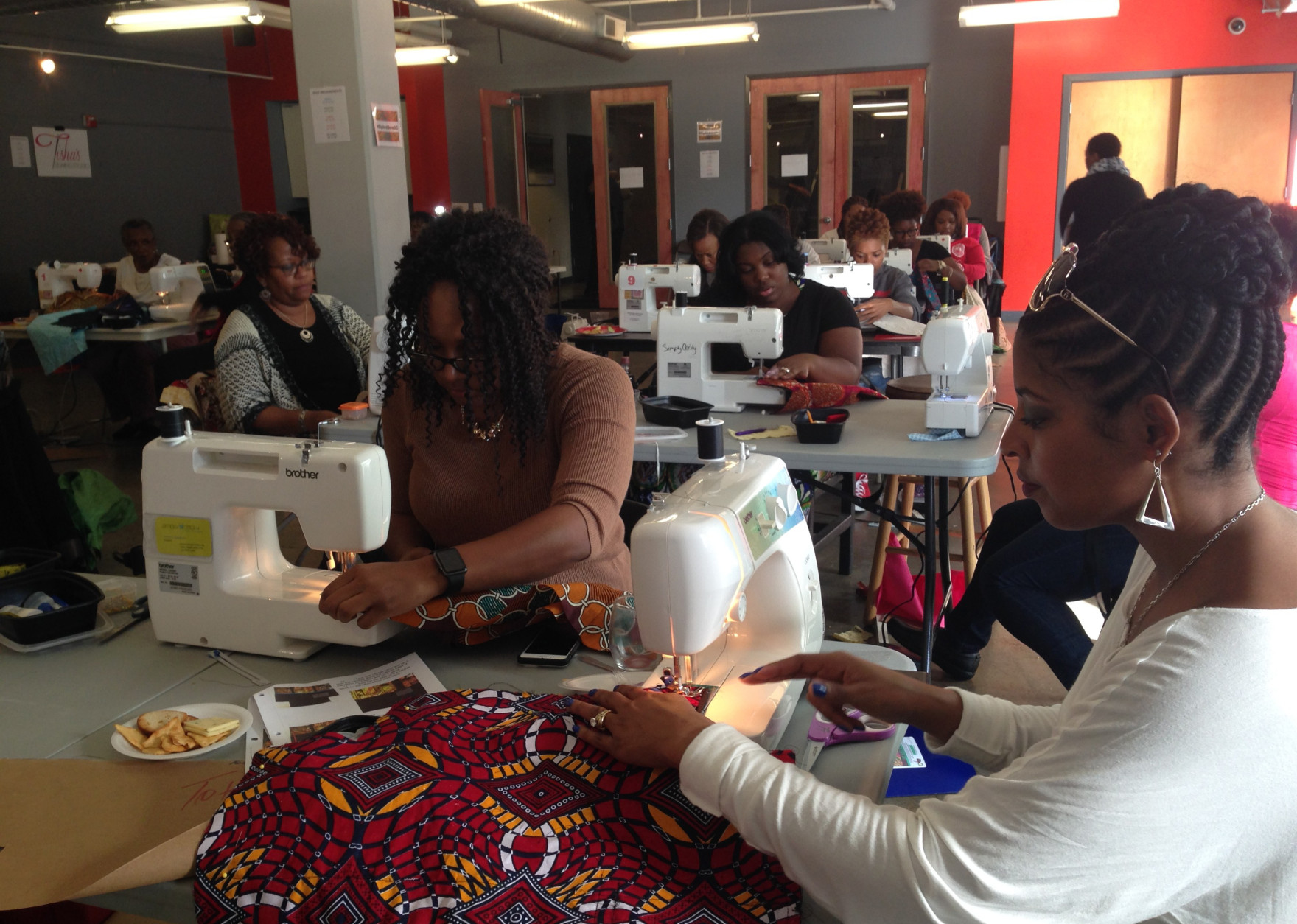
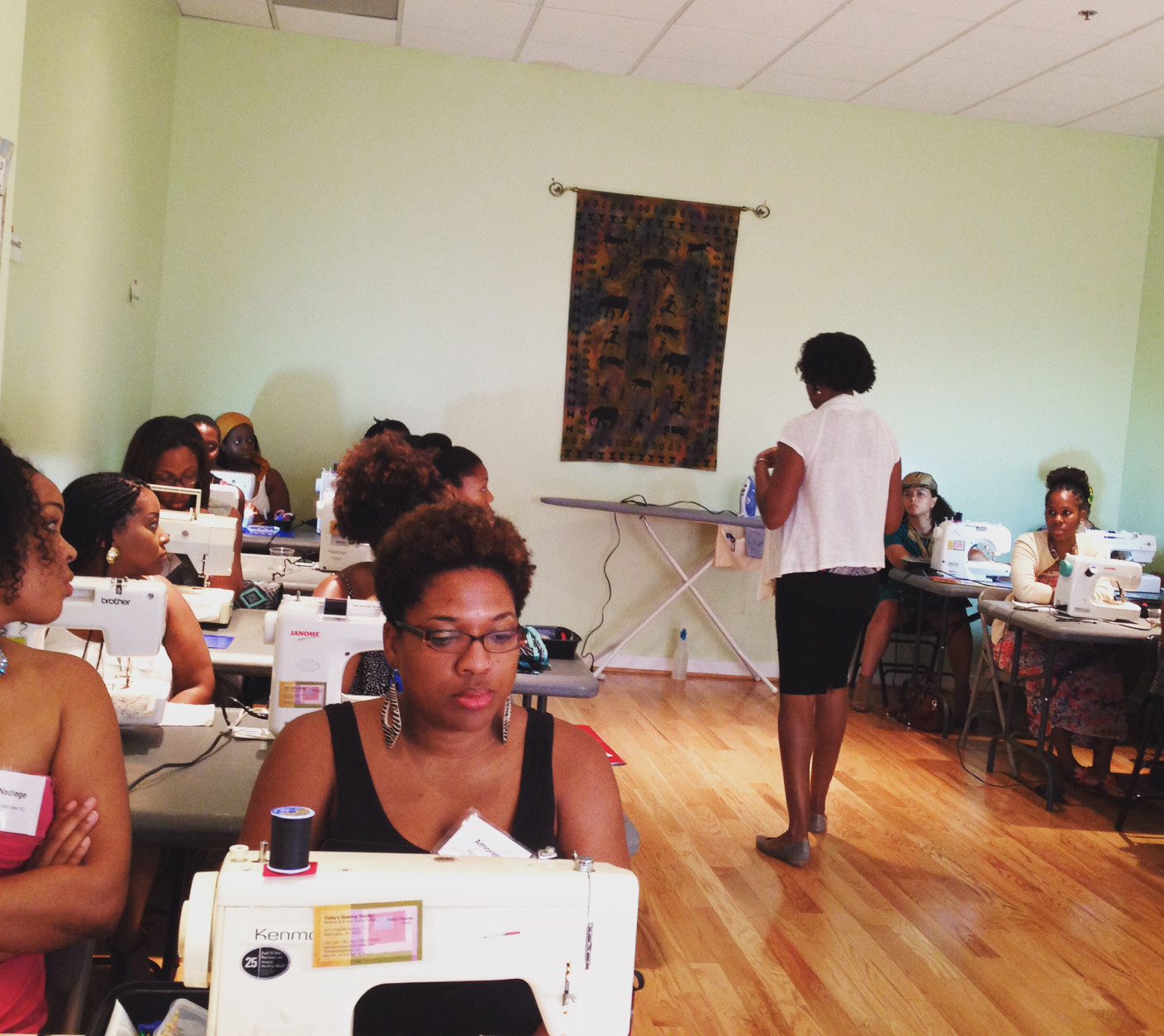
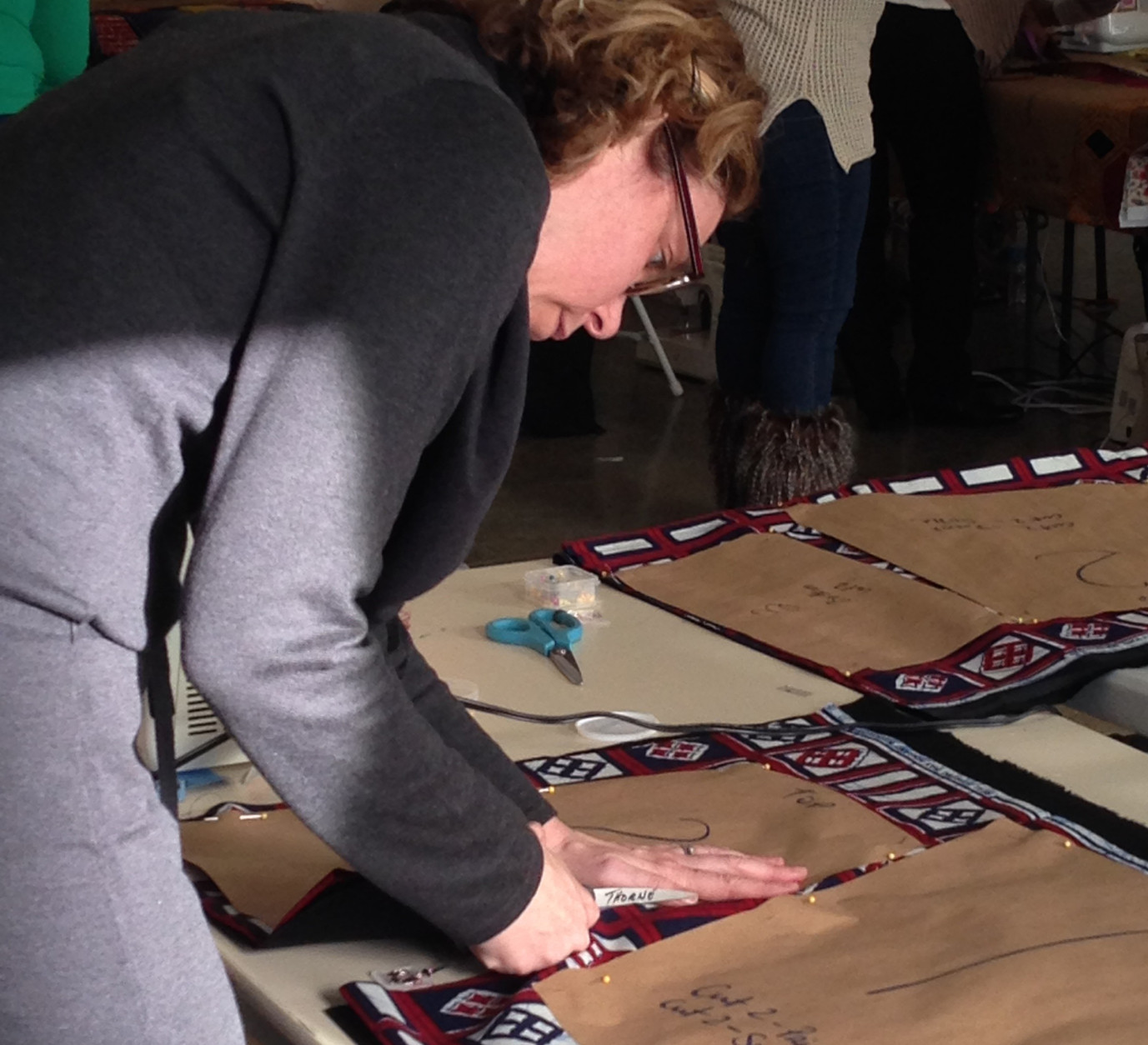
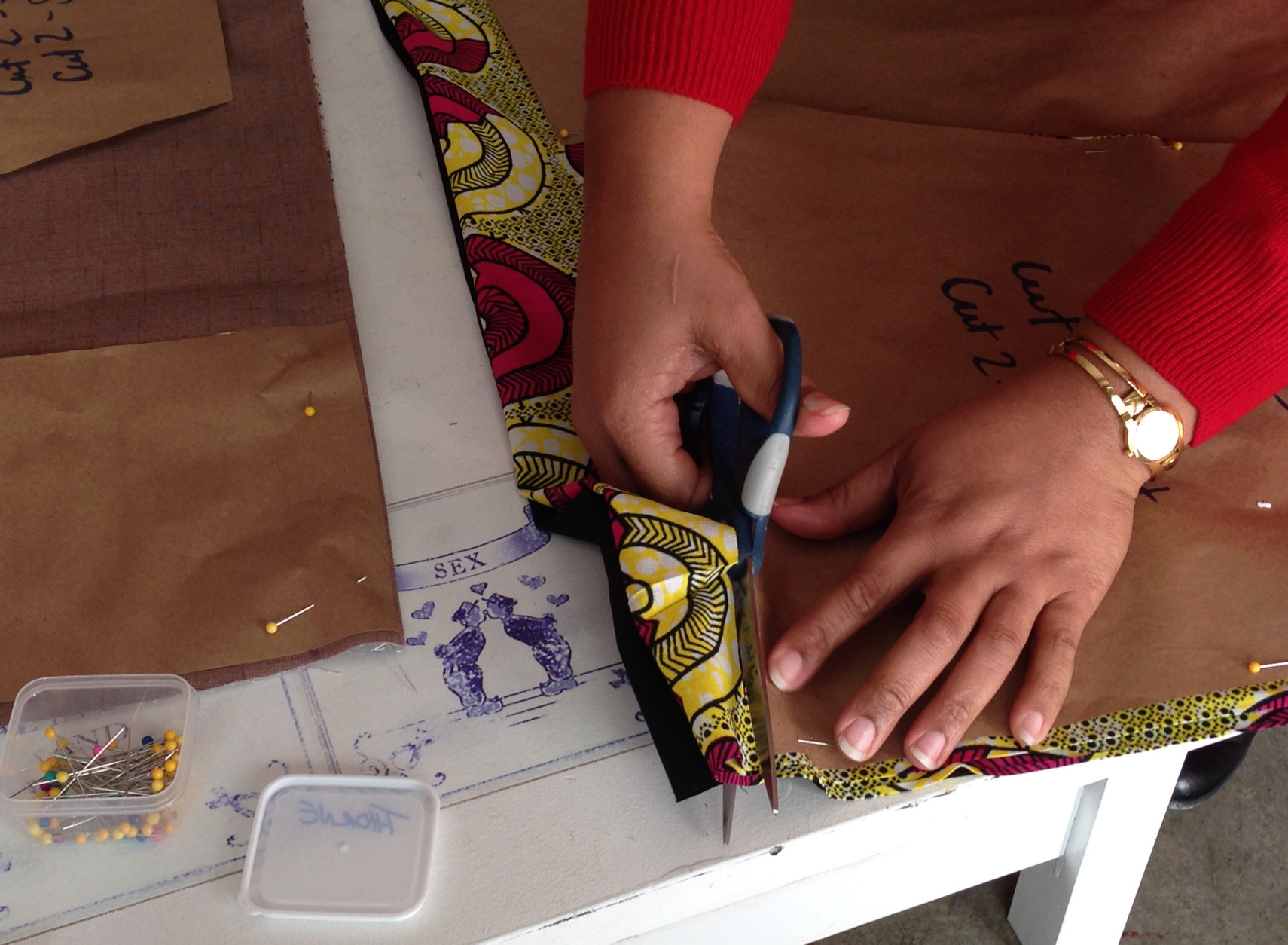
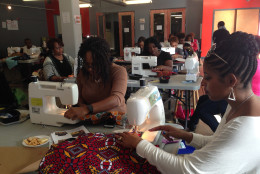
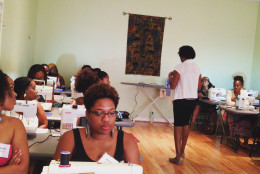
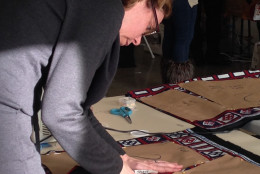
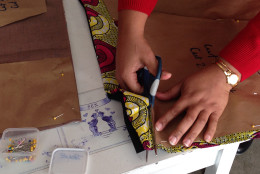
WASHINGTON — This isn’t your grandma’s sewing circle.
“We start off with a glass of wine,” says Cecily Habimana, half of the team behind the Sip and Sew DC series at Mount Rainier Artist Lofts in Mount Rainier, Maryland.
Sip and Sews are workshops that teach beginners basic techniques and guide them through a simple project — with the help of a little vino.
“It’s really just to get people to relax,” Habimana says. “People come in with a lot of anxiety about sewing.”
Habimana, the designer behind the D.C.-based Simply Cecily fashion label, and her friend and former neighbor Tisha Thorne, a full-time sewing instructor and owner of Tisha’s Sewing Studio, started the Sip and Sew series years ago as a way to spread their love of sewing all over the D.C.-metro region.
They’ve been sewing since they were school girls and see themselves as filling a void, since there aren’t many places to find physical sewing classes. A typical workshop has 25 to 30 students with three or four teachers. They’re held every other month, often with multiple workshops over the course a weekend.
Sip and Sews are come-as-you-are affairs.
“We actually bring everything: the fabric, the pattern, the notions, the sewing machines — even the wine,” says Thorne, who is the lead instructor.
Resurgence in sewing
The spread-fast nature of social media has been credited with helping DIY rise in popularity — the latest resurgence in sewing is a product of that. In fact, Vogue magazine declared 2015 “the year of DIY fashion trends.”
“You can look just as glorious as you want on your own,” says Anika Hobbs, owner and founder of Nubian Hueman boutique at Anacostia Arts Center in D.C.
Hobbs said she saw the potential in offering sewing workshops back when she opened her shop in 2013 and had partnered with Habimana and Thorne on their first wave of Sip and Sews. But demand was so strong that the workshops eventually outgrew the boutique space.
Even still, they are still trying to keep pace. The April and May workshops sold out within a matter of hours. As of Thursday evening, there were still tickets available for their July workshop. Workshops cost about $42.
They’re trying to accommodate demand by adding classes. A kid-centric Sip (Juice) and Sew event was added in May. They also are looking to partner with major institutions such as the Smithsonian, though details were still being worked out at the time this story was published.
Common mistakes to avoid
Though there’s a lot of good information on the web, there’s still a lot of room for error if you’re starting out and don’t have someone to show you the way. Habimana and Thorne said spending way too much on home machines is a common pitfall for beginners. A basic machine can cost between $50 and $125. The price differences typically comes down to the number of available stitches and whether the machine is computerized.
“I’m a designer, and I use, possibly, three stitches on machine. Ever,” says Habimana. “Unless you’re doing decorative type work, you really don’t need a whole lot of features. You really only need a straight stitch and a zigzag stitch. Don’t get caught up in the bells in the whistles.”
Project selection helps, too. Go for something simple. Thorne suggested trying simple alterations, such as hemming pants and tinkering on thrift shop clothes. Maxi skirts, a common Sip and Sew project, are an easy start-to-finish garment. They only require a large rectangle of fabric and an elastic waistband.
“People love making the skirts, and it really isn’t as difficult as people tend to look for it to be,” Habimana says.
In fact, the most difficult part about sewing isn’t the actual sewing. The hardest part for beginners is getting over the fear of messing up. Wine is meant to take the edge off, but Thorne’s gentle reminders also help.
“Through your failures, you are learning,” Thorne says.







